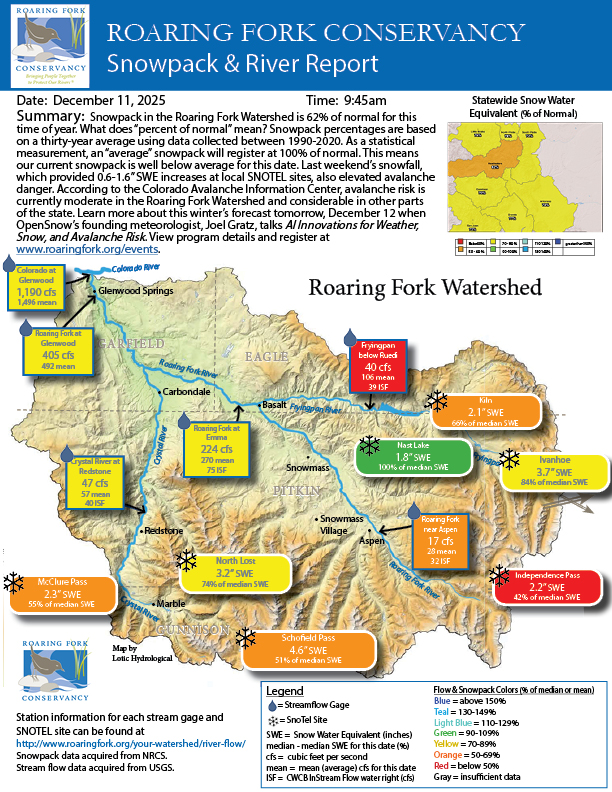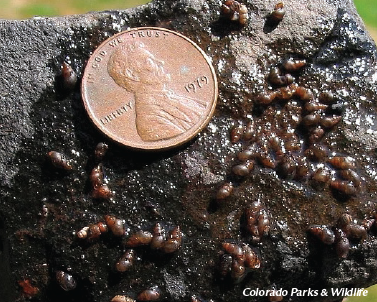
Weekly Snowpack Report
December 11, 2025 -
Summary:
Snowpack in the Roaring Fork Watershed is 62% of normal for this time of year. What does “percent of normal” mean? Snowpack percentages are based on a thirty-year average using data collected between 1990-2020. As a statistical measurement, an “average” snowpack will register at 100% of normal. This means our current snowpack is well below average for this date. Last weekend’s snowfall, which provided 0.6-1.6” SWE increases at local SNOTEL sites, also elevated avalanche danger. According to the Colorado Avalanche Information Center, avalanche risk is currently moderate in the Roaring Fork Watershed and considerable in other parts of the state. Learn more about this winter’s forecast tomorrow, December 12 when OpenSnow’s founding meteorologist, Joel Gratz, talks AI Innovations for Weather, Snow, and Avalanche Risk. View program details and register at www.roaringfork.org/events.


Calling All River Users to Protect Waterways from New Threats
It is time for every water user to take seriously their role in being a river steward. After you fish, boat, kayak, or stand-up paddleboard CLEAN, DRAIN, and DRY all your gear. Every time. Yes, really, every time.

Need a Gift with a Lasting Impact?
Need a last minute gift with a lasting impact?
Make your gift here and download a card for your recipient